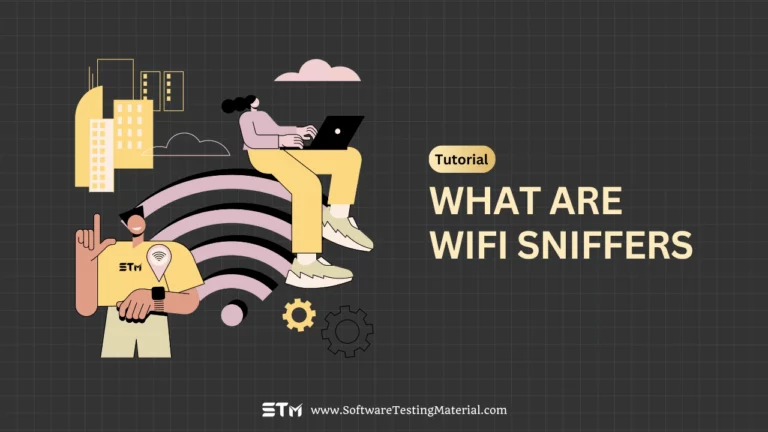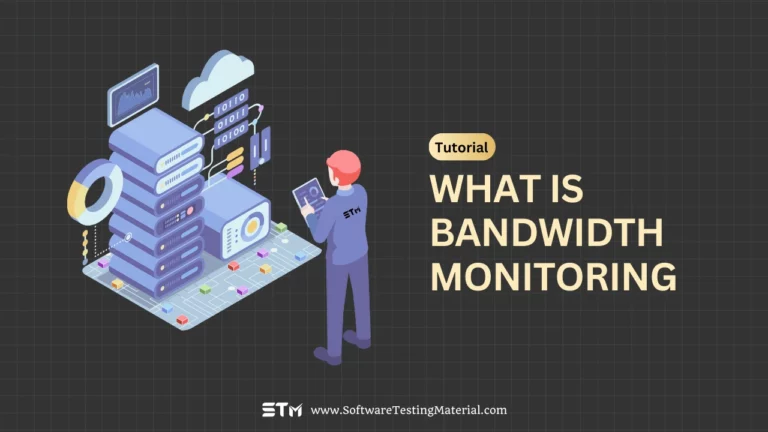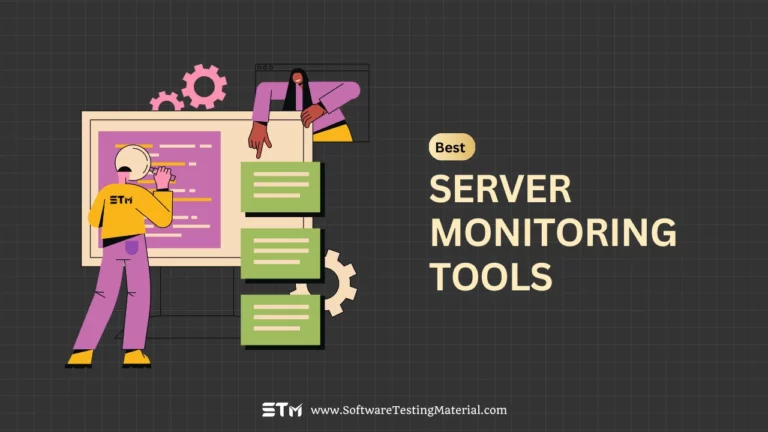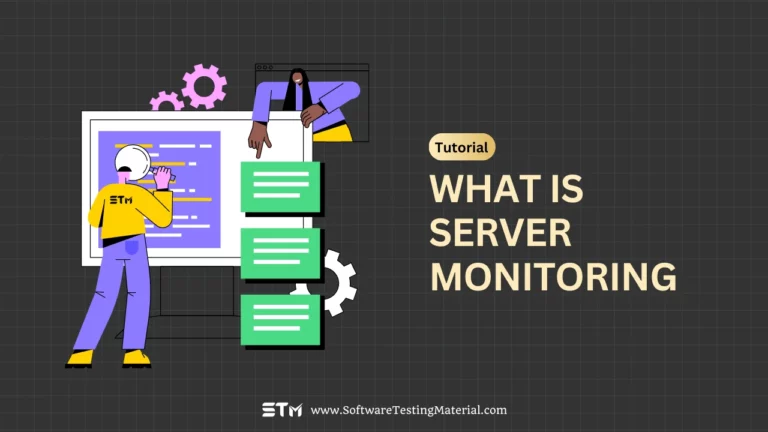15 Best Network Mapping Software Tools: Comprehensive Network Discovery and Visualization
Effective network management starts with a clear understanding of your network’s structure and connections. Network mapping software tools are essential for providing insights into the topology of a network, enabling administrators to discover devices, visualize connections, and optimize performance. These tools not only simplify complex infrastructures but also aid in troubleshooting, capacity planning, and maintaining security. By using the right network mapping solution, you can ensure seamless operations and gain complete visibility into your network environment. This article explores the best network mapping software tools available to help you make an informed choice for your organization’s needs.
What are Network Mapping Software Tools?
Network mapping software tools are essential for understanding and visualizing the structure of a network. These tools help network administrators like me create detailed representations of the devices, connections, and topology within a network. By using network mapping software, I can gain a clear picture of how all the devices such as computers, servers, switches, and routers are connected and interact with each other.
One of the most important features of these tools is their ability to automatically detect devices on the network and map them into an easy-to-read diagram. This saves a lot of time compared to manually creating network diagrams. These tools also help me identify potential issues in network connectivity, analyze traffic paths, and ensure everything is configured correctly.
With network mapping, I can monitor the network in real-time and quickly pinpoint any failures or bottlenecks. This ensures that the network operates smoothly and minimizes downtime. Many mapping tools also offer features like reports, alerts, and data visualization, which make it easier to manage and troubleshoot complex networks. Whether I’m working with a small office network or a large enterprise setup, network mapping software is a critical resource to keep everything running efficiently and securely.
What are the features of Network Mapping Software Tools?
- Automatic Discovery of Devices: Network mapping tools can automatically detect and map all devices connected to the network. This saves time and ensures no device is overlooked, providing an accurate and up-to-date view of the network.
- Real-Time Monitoring: These tools offer real-time monitoring of network activity. They can detect when devices go offline, when there are connectivity issues, or if unusual traffic patterns are occurring.
- Interactive Network Maps: Most tools create interactive visual maps that make it easy to understand how devices are connected, their status, and how data flows within the network.
- Customizable Alerts: Network mapping software often includes alert features that notify administrators of issues such as downtime, high latency, or security breaches. Alerts can be set up based on specific conditions or thresholds.
- Performance Analysis: These tools provide insights into the performance of the network by tracking metrics like bandwidth usage, latency, and packet loss. This helps identify areas for optimization.
- Integration with Other Tools: Many network mapping tools integrate seamlessly with other IT tools and systems, such as ticketing systems or security platforms, to streamline network management.
- Reporting and Analytics: Detailed reporting features allow network administrators to generate and view reports on network health, connectivity, and performance. These reports are useful for troubleshooting and long-term planning.
- Data Visualization: By offering clear and insightful visual representations, network mapping software makes complex data more understandable. This helps in making informed decisions quickly.
- Scalability: Network mapping tools are designed to work with networks of all sizes. Whether it’s a small office setup or a large enterprise, they scale to meet the needs of the organization.
- Enhanced Security Features: Advanced tools can pinpoint vulnerabilities within the network and highlight potential security risks, helping administrators take preemptive measures.
- Ease of Use: Most modern network mapping tools come with user-friendly interfaces, ensuring even a less experienced administrator can effectively utilize the software.
How to choose a Network Mapping Software Tool? Key factors to consider
- Understand Your Network Needs: Before choosing any tool, assess the size and complexity of your network. Determine how many devices you need to map and the level of detail required. A tool that works for a small business network might not be sufficient for a large enterprise.
- Budget Considerations: Establish a clear budget for the software. Some tools offer free versions with limited features, while others require a subscription or one-time purchase. Make sure the tool provides value for the investment.
- Ease of Integration: Ensure the software integrates seamlessly with your existing network infrastructure and tools. This prevents compatibility issues and streamlines workflows.
- Real-Time Updates: Look for software that provides live or real-time network updates. This feature helps you respond quickly to any changes or issues in the network.
- Customization Options: A good network mapping tool should allow you to customize views, reports, and alerts to fit your specific needs. This makes management and troubleshooting much easier.
- Scalability: Choose software that can grow with your organization. If your network expands, the tool should handle the increased load without sacrificing performance.
- Security and Compliance: Check if the tool comes with built-in security features like encryption and compliance with industry standards. This helps protect sensitive data and ensures safe operation.
- User-Friendly Interface: The tool should be easy to use, even for less experienced team members. A simple dashboard and clear visuals make navigating the software hassle-free.
- Reporting and Analysis Features: Look for software that includes detailed reporting and analytics capabilities. These can provide insights into network performance and help optimize operations.
- Support and Documentation: Verify the availability of technical support and user manuals. Good customer service and comprehensive documentation are crucial for resolving issues quickly.
By keeping these factors in mind, you can confidently select the right network mapping software tool for your organization’s needs.
Comparison of Top Network Mapping Tools
| Tool Name | Platform | Free Trial Available | Price Details |
|---|---|---|---|
| Auvik | Web-based | Yes, 14 days | Get a quote |
| Paessler | Windows | Yes, 30 days | Price starts at $2,149 |
| ManageEngine OpManager | Windows & Linux | Yes, 30 days | Get a quote |
| Site24x7 | Android, iOS, Windows, and Linux | Yes, 30 days | Starts at $9 per month |
| Datadog Network Performance Monitoring | Windows, Linux, Mac | Yes, 14 days | Starts at $5 per host, per month |
| EdrawMax | Web, Windows, Mac, Linux: Debian, Ubuntu, Mint 64 bit, Fedora, CentOS, Red Hat 64 bit. | Yes | $99 per year for individual subscriptions |
| Spiceworks Network Mapping Software | Windows | Yes, 30 days | Free |
| Intermapper | Windows, Linux, Mac. | Yes, 30 days | Get a quote |
| SolarWinds Network Topology Mapper | Windows | Yes | Starts at $1,570 one-time fee |
This table provides a clear breakdown of some of the top network mapping software tools, offering network administrators and IT professionals essential information to make an informed decision about which tool best suits their needs and budget.
List of Best Network Mapping Software
#1. Auvik
Auvik is a powerful, cloud-based network mapping and performance monitoring solution. It offers automated network discovery, real-time mapping, and performance trending. Auvik features easy integration, strong alerting, and troubleshooting tools to keep your network running smoothly. Its ability to back up configuration files ensures data security and quick recovery in the event of failures. With a focus on simplicity and robust management capabilities, Auvik is a top choice for managed service providers and enterprise administrators alike.
#2. Paessler PRTG Network Monitor
Paessler PRTG Network Monitor is a comprehensive network monitoring tool designed to provide complete visibility of your IT infrastructure. It monitors devices, systems, traffic, and applications in real time, enabling network administrators to spot issues before they escalate. This tool features an intuitive dashboard with customizable maps and alerts. PRTG also supports a wide range of technologies such as SNMP, NetFlow, WMI, and more, making it adaptable to different environments. Its ease of use, scalability, and powerful reporting capabilities make it one of the best network mapping tools for businesses of all sizes.
#3. ManageEngine OpManager
Best for: Automatically maps your dynamic network, providing real-time visual clarity for quicker troubleshooting.
ManageEngine OpManager’s network mapping capabilities go beyond simple diagrams, providing comprehensive and dynamic visualizations of your entire IT infrastructure. It automatically discovers network devices and their interconnections, and helps IT Admins visualize it with various maps including detailed Layer 2 topology maps, 3D floor and rack views for data centers, and customizable business views that group devices by service or function.
These maps are not static; they automatically update in real-time to reflect changes in your network, instantly highlighting device status with color codes. This visual clarity significantly helps IT administrators in pinpointing faulty devices, understanding network dependencies, optimizing resource allocation, and streamlining troubleshooting processes.
Must read: ManageEngine OpManager Alternatives
Key features:
- Network monitoring
- Network mapping
- Automated network discovery
- Storage management
- Server management
- Automated fault management
- Network visualization
- Root cause analysis
- IT workflow automation
- Adaptive thresholds
- Zia insights
Pricing details: ManageEngine follows transparent pricing, which is available on its store page.
#4. Site24x7 Network Mapping Tool
Best for: Visualizing device relationships in dynamic networks as topology and Layer 2/Layer 3 maps
Visualize network infrastructure as maps using SNMP data, providing a real-time visual representation of device relationships and traffic flows. It simplifies troubleshooting and capacity planning.
Key features:
- Easily discover devices and interfaces in dynamic and intuitive views with drill-down capabilities, intuitive maps, and color-coded health status indicators.
- Add custom nodes, monitor groups, and more to create customized topology views.
- View the map inventory and discover devices to be monitored directly from Layer 2 maps, with support for scheduled and on-demand refreshes.
- Hover over the nodes and links to view the respective device and interface details. You can also ping the response and view the traceroute from here.
Pricing details: Take a look at the standard network monitoring plans. Start a 30-day, free trial.
Pros:
- Requires no additional software agents or third-party integration
#5. Datadog Network Performance Monitoring
Datadog Network Performance Monitoring is a cloud-based solution that delivers detailed insights into network traffic and performance. It allows administrators to monitor communication between services, devices, and applications in real time. Key features include network flow tracking, customizable dashboards, and alerts that notify users of performance bottlenecks or anomalies. Datadog seamlessly integrates with a variety of applications and services, making it an excellent choice for modern, cloud-centric environments. Its ability to provide in-depth analytics ensures operational efficiency and improved troubleshooting.
#6. EdrawMax
EdrawMax is an excellent diagramming and network mapping software that simplifies creating complex network diagrams. Its drag-and-drop interface and a vast library of templates and symbols make it suitable for both beginners and advanced users. EdrawMax supports various export formats, enabling easy sharing and collaboration. While primarily a diagramming tool, its ability to produce detailed and aesthetic network maps ensures it’s a favorite among administrators for planning and documentation.
#7. Spiceworks Network Mapping Software
Spiceworks Network Mapping Software is a lightweight yet efficient tool for network monitoring and visualization. It can automatically map devices and display a full visual representation of your network. Spiceworks includes real-time alerts and troubleshooting capabilities, making it easy for administrators to manage network performance. The software is free to use and offers an active community for support, making it a popular choice for small to medium-sized businesses.
#8. Intermapper
Intermapper is a feature-rich network mapping software designed for real-time network visualization and monitoring. Its dynamic maps show live status and connectivity among network devices, allowing users to identify potential issues effortlessly. Intermapper supports SNMP and a variety of other protocols, making it versatile for different environments. Regular alerts, detailed reports, and historical data help in long-term network planning, making it ideal for organizations looking to maintain continuous network performance.
#9. SolarWinds Network Topology Mapper
SolarWinds Network Topology Mapper is a powerful network mapping tool that automates the discovery of devices and networks. It generates dynamic topology maps that are easy to modify and export. Key features include multi-vendor device support, real-time monitoring, and compliance reporting. SolarWinds simplifies network auditing and troubleshooting while improving overall performance. Its ability to handle complex networks makes it an outstanding choice for enterprise environments.
#10. jNetMap Network Monitor
jNetMap is a straightforward yet effective tool for small-scale network monitoring and mapping. It features a simple interface for creating network maps and associating devices with IP addresses. While not as feature-rich as other tools, it’s lightweight, straightforward, and sufficient for smaller networks where simplicity is key. Its low resource utilization makes it an excellent choice for resource-constrained environments.
#11. Microsoft Visio
Microsoft Visio is a widely-used diagramming tool that makes creating network maps simple and visually appealing. Its extensive library of shapes and templates allows users to design professional-grade diagrams and schematics. Visio integrates seamlessly with other Microsoft Office products, enabling easy sharing and collaboration. While primarily a diagramming tool, its powerful visualization features make it one of the best for creating and documenting network infrastructure layouts.
#12. LucidChart
LucidChart is a cloud-based diagramming tool that excels at creating network maps quickly and collaboratively. With drag-and-drop functionality, users can design network diagrams with ease. LucidChart supports real-time collaboration, making it ideal for teams working on complex projects. Its integration with tools like Google Drive and Microsoft Office enhances usability. Although it’s focused on diagramming, its simplicity and online accessibility make it a strong choice for network mapping.
#13. Device42
Device42 is an IT asset management and network discovery tool that offers automated mapping of IT infrastructure. It provides a detailed view of devices, interdependencies, and application connections within networks. The software includes features such as IP address management, real-time topology mapping, and comprehensive analytics. Device42 is particularly useful for data center management and is a top pick for its robust asset mapping and documentation capabilities.
#14. ConceptDraw Pro
ConceptDraw Pro is a diagramming solution known for its flexibility in creating professional-looking network maps. With support for a wide range of symbols, templates, and export formats, ConceptDraw Pro helps administrators document and plan networks effectively. It also includes integration with other platforms, making sharing and collaboration straightforward. Its versatility and professional-grade features place it among the best network mapping tools for planning and visualization.
#15. UVexplorer
UVexplorer is an intuitive network mapping and discovery tool aimed at making network management effortless. It features automated network scanning, which identifies devices and builds detailed maps. The software includes comprehensive reporting and allows administrators to monitor device performance with real-time alerts. UVexplorer’s user-friendly interface and robust capabilities make it an excellent option for organizations looking to enhance visibility and control over their networks.
Conclusion
Choosing the right network mapping software is essential for effectively managing and monitoring your network. Each tool discussed in this list has unique features tailored for different needs, from small businesses to large enterprises. Tools like Paessler PRTG Network Monitor, Datadog, and ManageEngine OpManager excel at providing comprehensive solutions, while others like LucidChart and Microsoft Visio are great for visual mapping and planning. Free options such as Spiceworks and jNetMap Network Monitor provide budget-friendly solutions, whereas premium tools like SolarWinds and Auvik offer advanced capabilities for complex networks. By understanding your network’s size, complexity, and key requirements, you can choose the most suitable software to ensure your network remains secure, optimized, and reliable.
Related posts:
- What is Network Monitoring
- What is Bandwidth Monitoring
- What is Network Mapping
- What is Network Traffic Analyzer
- What is Server Monitoring
- What are WiFi Sniffers
- What is SNMP (Simple Network Management Protocol)
- Best Network Monitoring Tools
- Best Network Bandwidth Monitoring Software
- Best Network Traffic Analyzers
- Best Server Monitoring Tools
- Best WiFi Sniffers
- Best Network Administrator Tools
- Best ManageEngine OpManager MSP Alternatives
- Best LogicMonitor Alternatives






